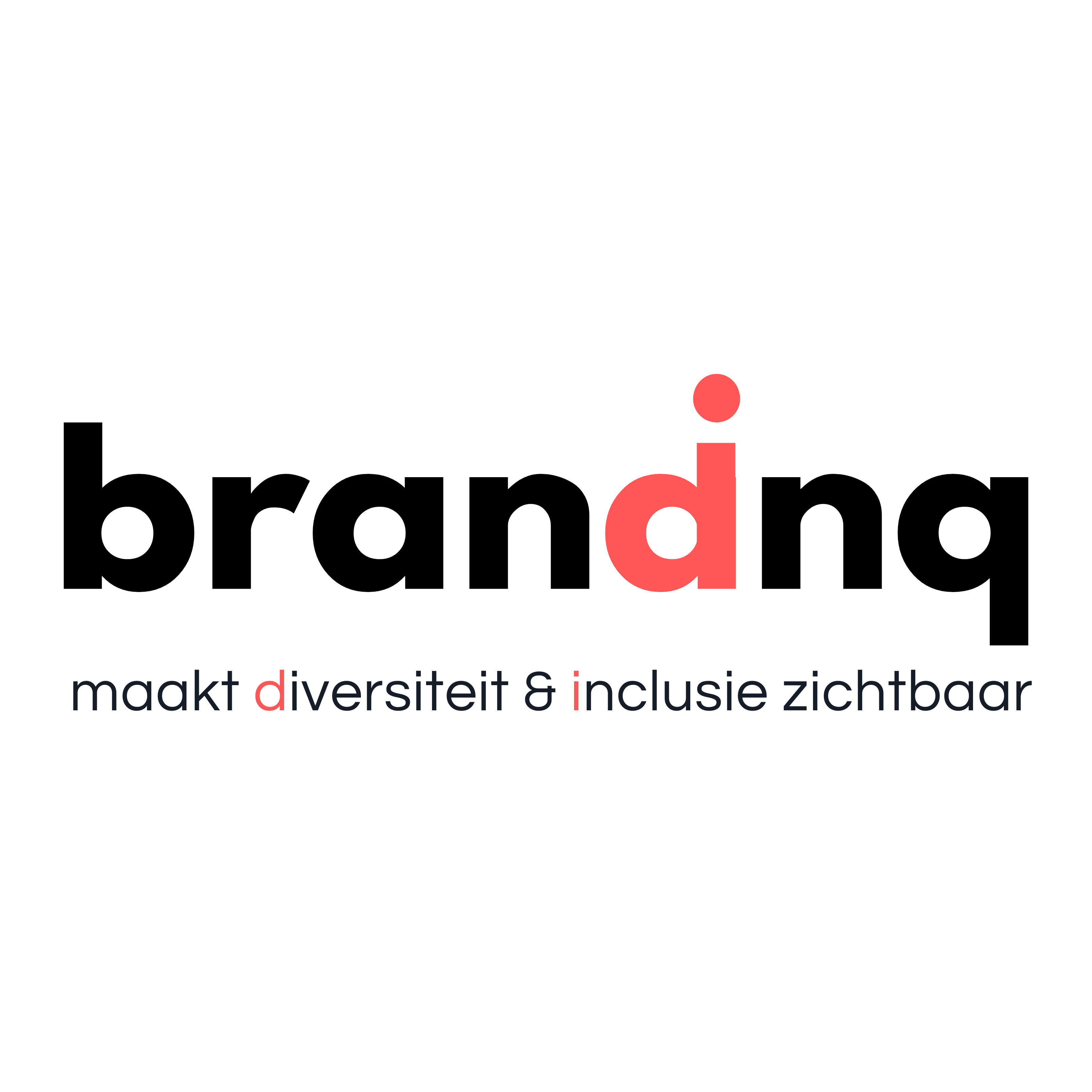10 Tips on How to Maximise Your Employee Resource Group

Employee Resource Groups (ERGs) are crucial for promoting diversity, equity, and inclusion (DEI) in the workplace. These employee-led groups provide support to individuals from underrepresented backgrounds and their allies, fostering collaboration and driving change. However, to be effective, ERGs must be well-structured, supported, and aligned with business objectives.
90% of Fortune 500 companies have ERGs, demonstrating their value in cultivating inclusive cultures. Research shows employees in effective ERGs report higher inclusion, with 83% feeling included, compared to 59% in less effective groups. Additionally, 88% of British employees work harder when appreciated, and ERGs foster this appreciation.
This guide will share ten strategies to enhance your ERG’s impact, supporting its members and contributing to broader DEI goals.
1. Define Clear Objectives & Mission
A successful Employee Resource Group (ERG) needs a clear mission, defined objectives, and an understanding of the challenges it aims to address. Setting SMART (Specific, Measurable, Achievable, Relevant, Time-bound) goals ensures focus and demonstrates value to leadership. Measuring impact is key, with effective ERGs tracking membership, event participation, and diversity data (McKinsey). Executive engagement is also crucial—82% of firms with active ERGs gather feedback or make recommendations to leadership.
Matthew Syed, a globally recognised thought leader in cognitive diversity and inclusion, emphasises that diverse teams make better decisions and drive innovation. His research into psychological safety and high-performance cultures underscores the importance of ERGs in fostering inclusive workplaces where employees feel empowered to share their perspectives. With 34% of UK employees feeling disconnected at work and 65% seeking stronger belonging, ERGs play a critical role in bridging this gap. By setting clear goals and engaging both members and leadership—principles Syed champions in his work—ERGs can cultivate inclusive cultures that unlock potential, enhance collaboration, and support long-term organisational success.
2. Secure Leadership Support & Executive Sponsorship
Employee Resource Groups (ERGs) thrive when they receive robust support from senior leaders. Securing an executive sponsor—an influential figure within the organisation—can lend credibility to the group and provide vital resources. The McGregor-Smith Review recommends that businesses appoint a board-level sponsor for diversity issues to ensure accountability and drive progress. Similarly, the Race at Work Charter highlights the role of executive sponsors in securing funding, setting diversity targets, and supporting mentoring initiatives.
Globally recognised Diversity & Inclusion expert Kenny J. Anderson emphasises that real success is about what you give, not just what you gain—an ethos that applies directly to leadership sponsorship. Through his ‘Common Denominators for Success’ framework, he has helped organisations develop inclusive leadership structures where senior executives actively support ERGs. His research-backed approach aligns with findings from the Greater London Authority which underscores the power of mentorship—especially reverse mentoring, where senior leaders gain critical insights from underrepresented employees. Additionally, the Nuclear Decommissioning Authority’s Inclusion Strategy highlights the importance of senior leaders actively championing ERG initiatives, reinforcing the need for leadership-driven workplace inclusivity.
By securing committed executive sponsors who advocate for ERGs, organisations can ensure diversity initiatives move beyond policy statements and into meaningful action that fosters a truly inclusive culture.
3. Build an Inclusive & Diverse Membership
Employee Resource Groups (ERGs) should welcome individuals from all backgrounds, including allies who can help drive broader organisational change. A well-rounded membership creates a richer, more supportive community and fosters cross-functional collaboration. Research from the Greater London Authority highlights that building an inclusive culture can help combat workplace isolation and loneliness, which affect a third of the UK workforce. Regular policy reviews can help organisations keep their equality, diversity, and inclusion (EDI) strategies up to date. These findings underscore the importance of ERGs in fostering inclusivity and ensuring a supportive, engaged workforce.
Lenora Billings-Harris, a globally recognised DEI&B strategist, emphasises that diversity should be leveraged as a competitive advantage, and ERGs play a crucial role in this effort. By welcoming individuals from all backgrounds, including allies, organisations can create a well-rounded and supportive community that encourages cross-functional collaboration. Lenora’s expertise, backed by her extensive work with corporations such as NASA and Disney, reinforces the importance of regular policy reviews to keep equality, diversity, and inclusion (EDI) strategies effective and relevant. Her insights, reflected in her award-winning research on unconscious bias and inclusive leadership, demonstrate how ERGs can serve as a catalyst for positive change, fostering a workplace environment where all employees feel valued and engaged.
4. Develop a Strong Leadership Structure
To ensure sustainability and effectiveness, an Employee Resource Group (ERG) should have a clear leadership structure. This structure might include the following roles:
- Chair or President: Oversees the ERG and sets its strategic direction, ensuring alignment with organizational goals.
- Vice-Chair: Supports the chair and acts as a second-in-command, stepping in when the chair is unavailable.
- Event & Programme Leads: Plan and execute events, workshops, and networking sessions to engage members and promote the ERG’s mission.
- Communications Lead: Manages internal and external messaging, ensuring consistent and effective communication about the ERG’s activities and objectives.
- Membership & Engagement Lead: Focuses on recruitment and engagement strategies to attract new members and maintain active participation.
In addition, implementing term limits for leadership positions can encourage fresh perspectives and prevent burnout. For example, the MIT Inclusive Concurrent Enrollment Office suggests that ERG leads should serve for no more than three years. This strategy can help maintain energy and prevent fatigue while fostering innovative leadership.
5. Align ERG Goals with Business Priorities
While Employee Resource Groups (ERGs) primarily exist to support employees, aligning their objectives with business goals increases their legitimacy and ensures long-term support. Examples of this alignment include:
- Supporting talent acquisition by engaging with diverse recruitment channels.
- Providing insights for inclusive product design and marketing strategies, which can help broaden market reach and foster innovation, as outlined in a Forbes article on ERGs’ impact.
- Collaborating with HR on Diversity, Equity, and Inclusion (DEI) training and awareness initiatives, such as those led by Sage’s ERGs to improve business practices and promote an inclusive workplace.
By demonstrating their business impact through these actions, ERGs can gain increased funding, leadership buy-in, and broader organizational support, a trend reflected in McKinsey & Company’s and LeanIn.org’s study showing that 35% of companies have expanded their support for ERGs since 2020.
6. Organise Meaningful Events & Initiatives
Regular events and initiatives help keep members engaged and demonstrate the ERG’s value. A mix of activities includes:
A balance of professional and social events ensures broad participation and impact, enhancing members’ sense of belonging.
7. Leverage Data & Feedback to Drive Improvement
Tracking the impact of Employee Resource Groups (ERGs) is key to their sustainability. Using surveys, feedback forms, and key performance indicators (KPIs) provides valuable insights. For example, monitoring membership growth and engagement helps assess reach and influence. A 2022 report by The Rise Journey found that 42% of ERG leads were compensated for their time, highlighting the growing importance of these groups. Tracking event attendance and feedback helps evaluate their impact, with 67% of ERGs having leads who dedicate several hours a week to managing these events.
Dr. Dale Whelehan, CEO of 4 Day Week Global and a leading expert in organisational transformation, underscores the importance of data-driven strategies in fostering inclusive workplaces. His research on work-time reduction highlights how structural changes can enhance workforce equity, well-being, and engagement—key factors that also apply to the effectiveness of ERGs. As organisations refine their diversity initiatives, incorporating ERG feedback into broader DEI strategies aligns with Whelehan’s advocacy for systemic change. A 2023 study by Out Leadership found ERG members were 10% more engaged than their peers, reinforcing the link between inclusive policies and employee satisfaction. Furthermore, ERGs influence company policies and DEI initiatives. Diversity Dashboard’s 2024 article highlights how integrating ERG feedback can strengthen diversity efforts. Analysing these data points helps ERGs refine their strategies and secure further support.
8. Collaborate with Other ERGs & External Partners
Encouraging cross-ERG collaboration can amplify impact and strengthen networks within the organisation. For example, an LGBTQ+ ERG and a Women’s ERG co-hosting a panel on intersectionality can enhance inclusion and community building. Barclays’ 12 ERGs demonstrate how such partnerships can be effective. Research shows employees in effective ERGs feel more included.
Partnering with external organisations, such as charities and DEI speakers, brings fresh perspectives and credibility. For instance, NEXUS LGBTQ+ connects ERG leaders across sectors to share insights. The D&I market is projected to reach $15.4 billion by 2026, highlighting the growing investment in such partnerships.
9. Ensure Visibility & Communication
ERGs (Employee Resource Groups) are vital for promoting diversity and inclusion. Renowned workplace inclusion expert Ross Reekie emphasises the importance of psychological safety and meaningful engagement in workplace culture. To boost participation, strategies like creating a dedicated ERG page on the company intranet, sharing success stories in newsletters, leveraging social media, and ensuring leadership actively promotes ERGs in meetings. Ross’s approach, which combines academic research with real-world insights, reinforces that when employees feel valued and heard, ERGs become more than just initiatives—they drive real cultural change, enhancing belonging and productivity across the organisation.
10. Provide Leadership & Career Development Opportunities
One of the most compelling reasons for employees to engage with Employee Resource Groups (ERGs) is the opportunity for professional growth. ERGs can serve as incubators for future leaders by:
- Offering mentorship programmes that connect less experienced employees with seasoned professionals, fostering skill development and enhancing job satisfaction.
- Encouraging members to take on leadership roles within the ERG, allowing them to develop and demonstrate leadership skills through organising events, leading initiatives, and collaborating with senior management.
- Providing public speaking and project management experience through the organisation of events, workshops, and seminars, offering opportunities for members to practice these vital skills for career advancement.
- Partnering with HR to offer career development workshops, which support professional growth with resources like resume building, interview preparation, and career planning.
Investing in members’ professional development ensures that ERGs are seen as a valuable career-enhancing opportunity, and these initiatives can contribute to higher engagement, retention, and overall success within the organisation.
Conclusion
When harnessed effectively, Employee Resource Groups (ERGs) can drive meaningful change, foster inclusive workplaces, and positively impact both employees and business performance. By setting clear objectives, securing leadership support, encouraging engagement, and aligning with business priorities, ERGs can become powerful agents of cultural transformation.
Identifying talent in the workplace is an ongoing process. By fostering an inclusive culture, leveraging data-driven tools, and recognising diverse abilities, organisations can unlock their workforce’s full potential. This not only benefits employees but also enhances innovation, engagement, and success at every level.
At the Diversity and Inclusion Speakers Agency, we connect organisations with experts in talent identification, diversity, and inclusive leadership. Whether you need an inspiring keynote speaker or a DEI consultant to shape your ERG strategy, our specialists can help.
Call us on 0203 9816 297 or email agent@diversity-inclusion-speakers.com to book a speaker for your next event.













